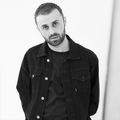Interviews
News Flash
A closer look of KARL MAYER's machines at its Academy
23 Dec '11
5 min read
The theoretical part was followed by the practical part, which involved drafting various patterns and producing them on an RSJ 5/1 EL in the Training Centre. As the machine was running, the advantages of using the individual functions, such as lapping changeover, the Multi-Speed function, and control of the fabric take-down to produce stitches of different size, became clear immediately – an invaluable learning experience for all the participants in the RSJ course, who were delighted with the course content.
The Chinese designers and textile specialists developed many new ideas for generating future business and collected useful tips that would be invaluable to them in their day-to-day work. They were also given the opportunity to discuss production problems with the head of the course, Stefan Gross, and develop new ideas.
The two part training course on the RD 7 EL was held a month after the RSJ course. The first part took place from 14 to 19 November and covered the construction of the 3D textiles produced on the double-bar Raschel machine. It was aimed primarily at designers and product developers. The second part of the course was held from 21 to 26 November, when the instructor, Stephan Jung described the technical features of the machine and the sequences involved in producing the various patterns, using the machine available on site.
One of the main aspects covered in the course concerned the relationships between the construction of the pile spacer layer and important textile parameters such as thickness, weight per unit area, and compression resistance. Other topics covered included the quality of the warp-knitted spacer textiles and especially the design potential offered by the RD 7 EL. The specific configuration of the double-bar raschel machine in the KARL MAYER Academy (four patterning ground guide bars on the front needle bar, one pile bar, two stitch-forming ground guide bars on the rear needle bar and EL drive) offers a wide range of possibilities.
For example, the course participants learned how to create structured surfaces, different coloured effects, soft-touch constructions and mesh patterns having different opening widths. Particularly interesting is the production of different pore sizes, not only on the upper and lower surfaces, but also over the length and width of an area.
To consolidate what they had learned, the students used the ProcCad warpknit 3D system to simulate patterns and then produced them on a training machine. The RD course, which combined theory with practice, proved to be an extremely efficient and novel way of increasing the students' knowledge.
With their new-found knowledge, the participants returned home to breathe new life into the production of spacer textiles and thus to contribute to the success of their companies.
The Chinese designers and textile specialists developed many new ideas for generating future business and collected useful tips that would be invaluable to them in their day-to-day work. They were also given the opportunity to discuss production problems with the head of the course, Stefan Gross, and develop new ideas.
The two part training course on the RD 7 EL was held a month after the RSJ course. The first part took place from 14 to 19 November and covered the construction of the 3D textiles produced on the double-bar Raschel machine. It was aimed primarily at designers and product developers. The second part of the course was held from 21 to 26 November, when the instructor, Stephan Jung described the technical features of the machine and the sequences involved in producing the various patterns, using the machine available on site.
One of the main aspects covered in the course concerned the relationships between the construction of the pile spacer layer and important textile parameters such as thickness, weight per unit area, and compression resistance. Other topics covered included the quality of the warp-knitted spacer textiles and especially the design potential offered by the RD 7 EL. The specific configuration of the double-bar raschel machine in the KARL MAYER Academy (four patterning ground guide bars on the front needle bar, one pile bar, two stitch-forming ground guide bars on the rear needle bar and EL drive) offers a wide range of possibilities.
For example, the course participants learned how to create structured surfaces, different coloured effects, soft-touch constructions and mesh patterns having different opening widths. Particularly interesting is the production of different pore sizes, not only on the upper and lower surfaces, but also over the length and width of an area.
To consolidate what they had learned, the students used the ProcCad warpknit 3D system to simulate patterns and then produced them on a training machine. The RD course, which combined theory with practice, proved to be an extremely efficient and novel way of increasing the students' knowledge.
With their new-found knowledge, the participants returned home to breathe new life into the production of spacer textiles and thus to contribute to the success of their companies.
KARL MAYER
Popular News
Leave your Comments
Editor’s Pick
Andreas Rass
ZIMMER AUSTRIA | Digital Printing Systems
Aleksandre Akhalkatsishvili
Label - Aleksandre Akhalkatsishvili
































-Ltd..jpg?tr=w-120,h-60,c-at_max,cm-pad_resize,bg-ffffff)





.jpg?tr=w-120,h-60,c-at_max,cm-pad_resize,bg-ffffff)
.jpg?tr=w-120,h-60,c-at_max,cm-pad_resize,bg-ffffff)






